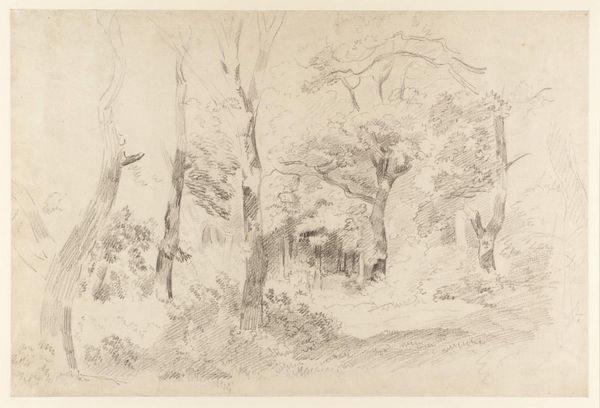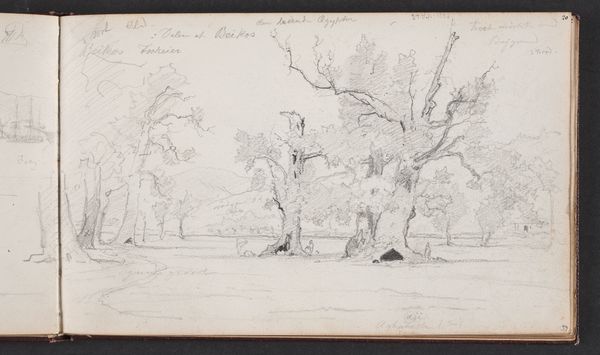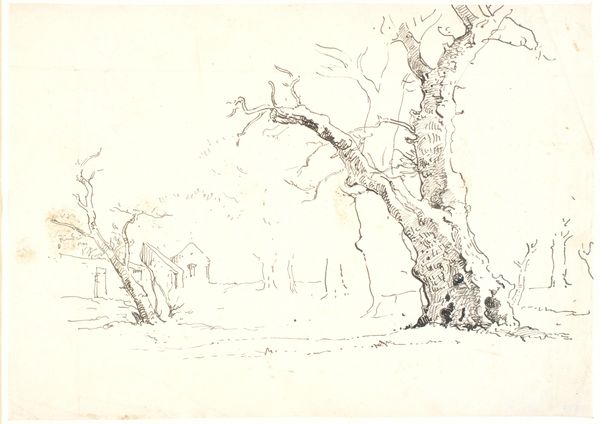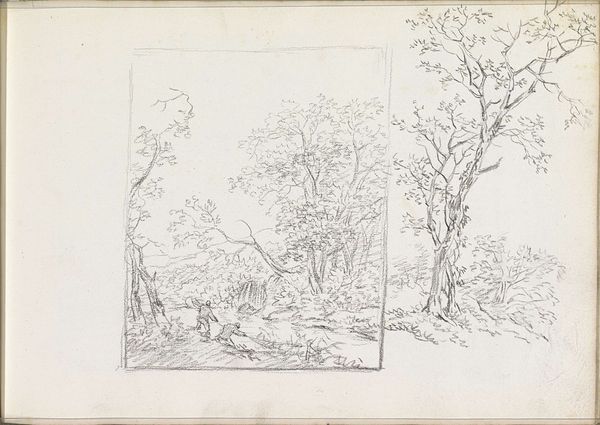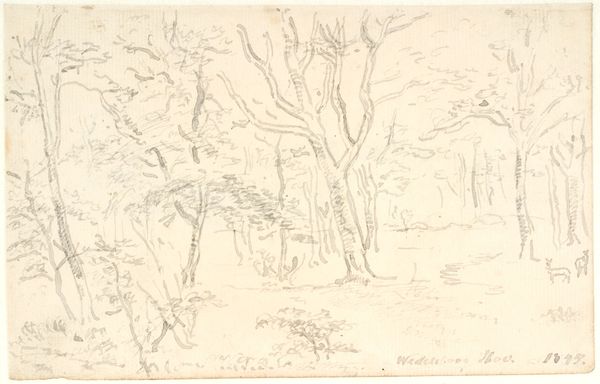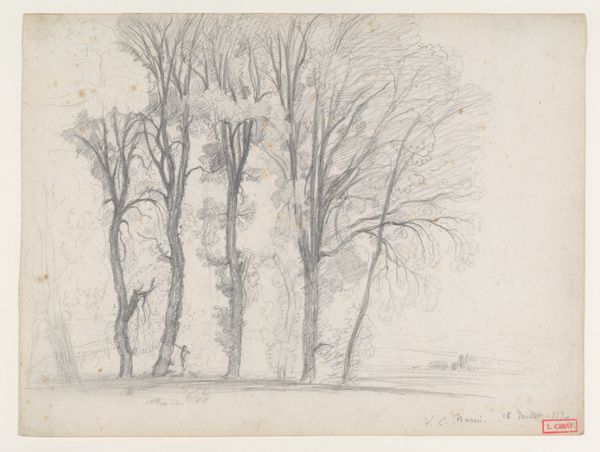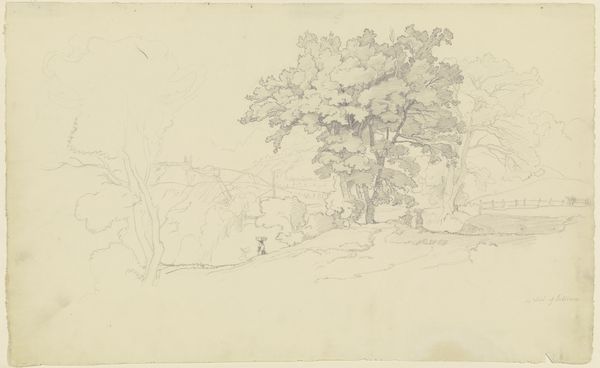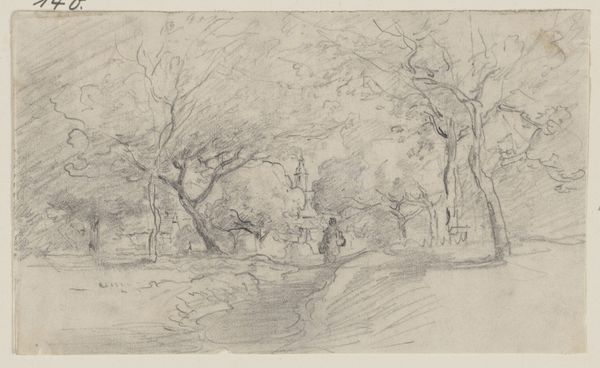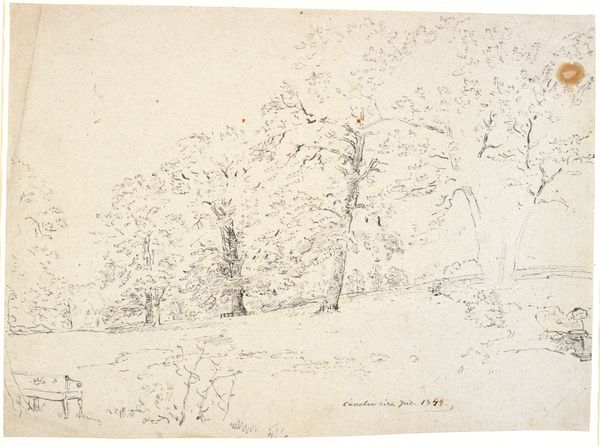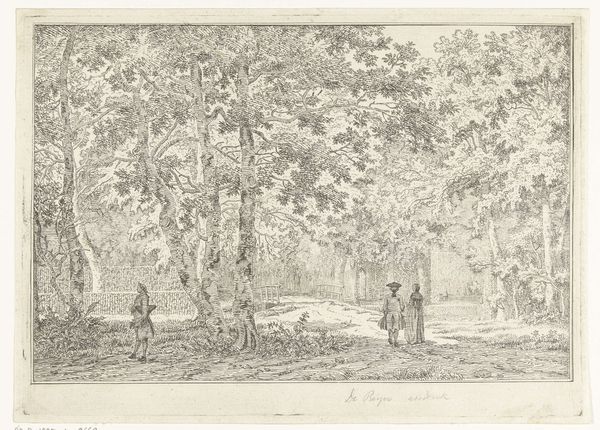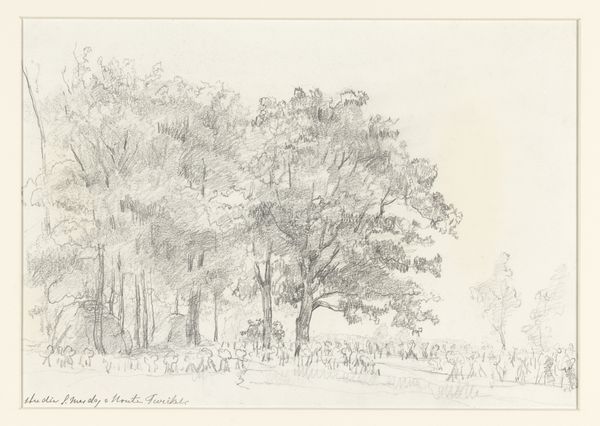
Dimensions: height 244 mm, width 331 mm
Copyright: Rijks Museum: Open Domain
Willem Roelofs created this landscape in pencil, depicting the Forest of Fontainebleau. The Forest of Fontainebleau, located southeast of Paris, became a significant site for artists in the 19th century. It offered an alternative to academic history painting. Instead, artists focused on direct observation of nature. This shift aligned with broader social changes, including a growing interest in democratic ideals and a rejection of aristocratic patronage. Roelofs, a Dutch artist, was part of a larger movement that sought to capture the essence of the natural world. Artists like him often worked en plein air, directly in front of their subjects. They challenged the established art institutions and sought to create a more authentic and accessible form of art. To fully understand this drawing, we can explore the writings of art critics of the time, exhibition reviews, and artists' personal letters. These resources can provide insights into the cultural values and artistic debates that shaped its creation. The meaning of art is always contingent on its social and institutional context.
Comments
No comments
Be the first to comment and join the conversation on the ultimate creative platform.
